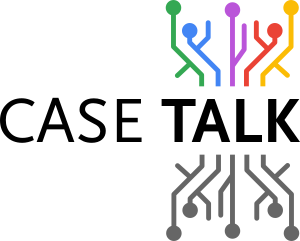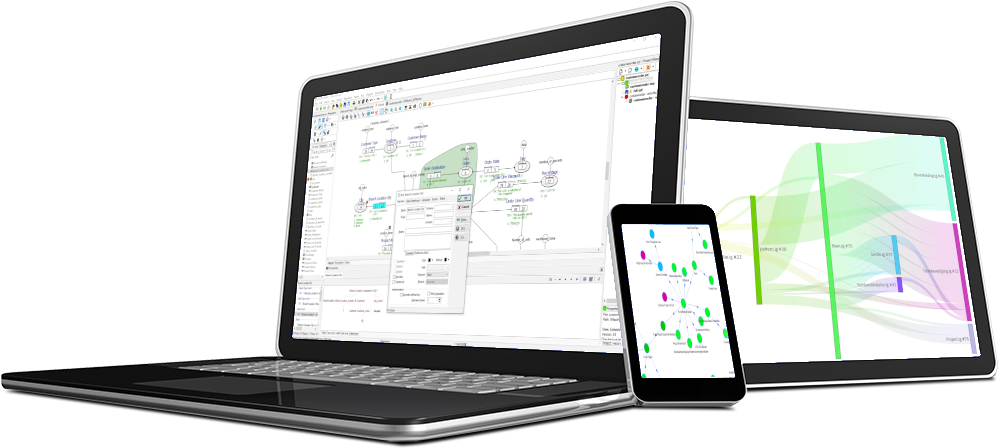From Data to Information: How Natural Language Modeling Transforms Enterprise Communication
In an age where data seems omnipresent yet information remains elusive, organizations face a fundamental challenge: how to bridge the gap between raw data structures and meaningful business communication. A live one hour presentation and demonstration of Fully Communication Oriented Information Modeling (FCOIM), Marco reveals how starting with natural language can transform the way we approach data architecture and system design. It is a follow up for the book "Just the Facts".
The Information Paradox
As one presenter noted, "we're talking about data products, data engineering, dashboards, but in the end we really do not need data—we need information." This distinction, while subtle, represents a critical shift in thinking. Data may be eternal in our systems, but information—the meaning we extract from it—remains frustratingly ephemeral.
The challenge lies in our approach. Traditional methods focus on structuring data for databases and software systems, but information itself proves difficult to grasp, store, and manage effectively. We know how to build technical artifacts, but struggle to maintain the business context that gives those artifacts meaning.
The Natural Language Foundation
FCOIM addresses this challenge by starting with concrete fact statements expressed in natural language by domain experts. Rather than beginning with technical diagrams or abstract models, the methodology captures how business stakeholders actually communicate about their work.
Consider a simple example: "Marco lives in Utrecht." This statement, while straightforward, contains rich structural information when analyzed systematically. The methodology breaks this down into:
- Fact Types: The pattern "person lives in city" that can be applied to similar statements
- Object Types: Person and City as representations of real-world entities
- Label Types: The actual identifiers like "Marco" and "Utrecht" used in business communication
This three-tier structure provides the foundation for generating various technical artifacts while preserving the original business language and examples.
Live Modeling in Action
A demonstration using student apprenticeship data illustrates how this approach works in practice. Starting with basic facts like "Marco lives in Utrecht" and "There is an apprenticeship S101 which takes place in New York," the methodology builds increasingly sophisticated models through iterative refinement.
The process reveals several key advantages:
Traceability: Every element in technical diagrams can be traced back to specific business statements, complete with examples and context.
Validation: Business stakeholders can verify models by reading the original language and examples embedded in technical artifacts.
Flexibility: The same information model can generate multiple representations—UML class diagrams, normalized database schemas, Data Vault structures—without losing business meaning.
Constraint Discovery Through Examples
One of the methodology's most powerful features is its approach to business rule discovery. Rather than asking abstract questions about constraints, it presents concrete scenarios based on actual data examples.
For instance, when modeling student apprenticeship preferences, the system might ask: "Can Peter Johnson have preference number one for both apprenticeship S101 and apprenticeship S102?" The business expert's answer directly drives the resulting data model structure, determining whether relationships are one-to-one, one-to-many, or many-to-many.
This example-driven validation ensures that business constraints are captured accurately rather than assumed by technical teams.
Advanced Capabilities
Modern implementations of FCOIM incorporate several sophisticated features:
AI Integration: ChatGPT integration can augment basic fact statements with additional context, definitions, and interview questions to help domain experts articulate their requirements more completely.
Multi-language Support: International organizations can model in their native language and automatically generate artifacts in multiple languages, supporting global compliance and collaboration.
Live Data Integration: Models can connect to existing databases and systems, importing reference data and maintaining synchronization between conceptual models and operational systems.
Temporal Modeling: The methodology handles time-based requirements naturally, allowing organizations to track historical changes without complicating business communication.
Addressing Scale and Complexity
Critics might argue that such detailed attention to business language is impractical for large-scale systems. However, real-world implementations suggest otherwise. One Dutch company's SAP migration project has managed over 20,000 terms using this approach, with everything "uniquely named, managed, tracked, tagged, and versioned."
The key insight is that this upfront investment in understanding business communication pays dividends throughout the system lifecycle. When organizations migrate systems or integrate data sources, they preserve not just the data but the information—the business meaning that makes data valuable.
The Communication Pipeline
The methodology addresses a common enterprise challenge: departmental silos that lead to incompatible interpretations of the same concepts. Different departments might use "inventory" to mean books on the shelf, books already sold, or books on order. Traditional approaches handle this through technical workarounds, but FCOIM tackles it at the source through systematic communication analysis.
By maintaining metadata about who said what, when, and in what context, organizations can trace the evolution of business concepts and resolve semantic conflicts before they become technical problems.
Integration with Modern Architectures
FCOIM's flexibility makes it particularly relevant for contemporary data architecture patterns. The methodology can generate:
- Normalized relational schemas for traditional OLTP systems
- Dimensional models for data warehousing
- Data Vault structures for enterprise data hubs
- Graph representations for knowledge management
- API schemas for modern microservices architectures
This multi-target capability addresses a critical challenge in heterogeneous enterprise environments where different systems require different data representations.
Practical Considerations
While FCOIM offers compelling advantages, it requires significant investment in domain expert engagement and systematic process discipline. The methodology works best in environments where:
- Precision matters more than speed: Complex domains where misunderstood requirements carry high costs
- Stakeholder engagement is feasible: Organizations can commit domain experts to the modeling process
- Long-term maintenance is a priority: Systems expected to evolve and integrate over time
The Verification Imperative
The methodology's emphasis on verification addresses a fundamental weakness in traditional approaches. As one practitioner noted, when presented with a logical diagram at a data modeling conference, expert modelers couldn't vouch for its correctness because "we're missing the story—we don't know the story of the business to be able to verify this."
FCOIM ensures the story is never lost. Every technical artifact includes the business communication that generated it, creating a complete audit trail from requirements through implementation.
Looking Forward
As organizations grapple with increasing data complexity and the need for business-IT alignment, FCOIM's emphasis on communication-first modeling offers a proven alternative to purely technical approaches. The methodology's integration with AI tools and modern development platforms suggests it will remain relevant as technology continues to evolve.
The fundamental insight remains powerful: successful data initiatives must begin not with technical artifacts, but with clear, verified understanding of how businesses actually communicate about their work. In an era where data is abundant but information remains scarce, this focus on preserving business meaning throughout the technical implementation process may be exactly what organizations need to bridge the gap between their data and their knowledge.


